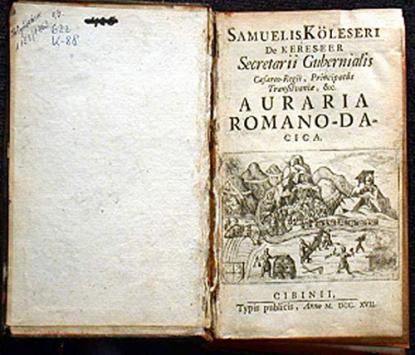2024. November 21. Thursday
Central Museum of Mining - Sopron
|
|
Address: 9400, Sopron Templom utca 2.
Phone number: (99) 312-667, (99) 338-902
E-mail: info@kbm.hu
Opening hours: 01.04-31.10.: Tue-Sun 10-18
01.11-31.03.: Tue-Sun 10-16 |
Museum tickets, service costs:
|
Ticket for adults
|
700 HUF
|
|
|
Ticket for students
|
400 HUF
|
|
|
Ticket for pensioners
|
400 HUF
|
|
|
Audio guide
|
200 HUF
|
|
|
Audio guide
(in German)
|
200 HUF
|
The first book published on the science on mining was written by Georgius Agricola in the 16th century. It is still the most important source when examining the mining of the period.

At the beginning Latin and German were used to write books on the topic, but in the last third of the 18th century books written in Hungarian, even professional works, were also published on mining,.
As a collection of the knowledge of the period on mining a book by Nikolaus Voigteln: 'Geometria Subterronea' was published in Leipzig in 1714. This book became a canon at the Academy of Selmec. The first book by a tutor of the Academy Delius, titled 'Mining' (Wien, 1773) served the same purpose. The first book written in the Hungarian language on minerals was written by Ferenc Benkő: 'Of the signs of the Stones and Minerals' (Wien, 1786).
The first blowing up of stones performed first in Selmecbánya in 1627 witnessed the pragmatic utilization of the sciences of mining. In 1735 a School for Mining Officials opened in Selmecbánya. By 1749 the system of lakes for gaining energy was also ready to work around Selmec. It was the work of the two Hells who became important representatives of building mining machines in the 18th century. In documentaries from Mary Teresa she praised the Hell family and awarded József Károly Hell who devised the water- and the air machines. He also started working with the fire machine devised on his own.
The sciences of mining were the most important features of the industrial development until the end of the 19th century.

At the beginning Latin and German were used to write books on the topic, but in the last third of the 18th century books written in Hungarian, even professional works, were also published on mining,.
As a collection of the knowledge of the period on mining a book by Nikolaus Voigteln: 'Geometria Subterronea' was published in Leipzig in 1714. This book became a canon at the Academy of Selmec. The first book by a tutor of the Academy Delius, titled 'Mining' (Wien, 1773) served the same purpose. The first book written in the Hungarian language on minerals was written by Ferenc Benkő: 'Of the signs of the Stones and Minerals' (Wien, 1786).
The first blowing up of stones performed first in Selmecbánya in 1627 witnessed the pragmatic utilization of the sciences of mining. In 1735 a School for Mining Officials opened in Selmecbánya. By 1749 the system of lakes for gaining energy was also ready to work around Selmec. It was the work of the two Hells who became important representatives of building mining machines in the 18th century. In documentaries from Mary Teresa she praised the Hell family and awarded József Károly Hell who devised the water- and the air machines. He also started working with the fire machine devised on his own.
The sciences of mining were the most important features of the industrial development until the end of the 19th century.
